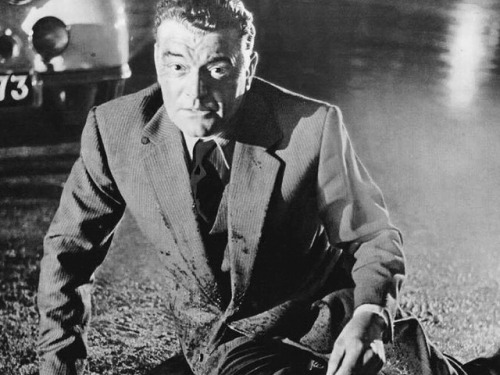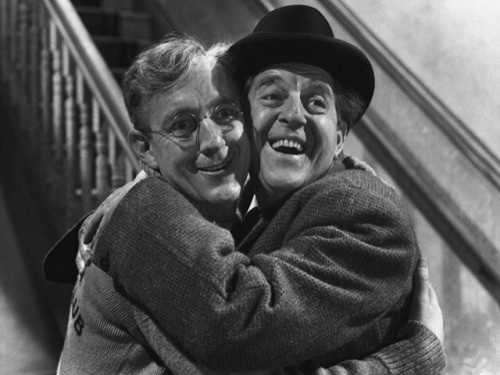The Blue Lamp - Tumblr Posts

Movie number 58: The Long Arm aka The Third Key (Charles Frend, 1956).
The final movie shot at Ealing Studios before production shifted to the MGM British Studios. The Long Arm, retitled The Third Key in the US, stars Jack Hawkins as phlegmatic detective superintendent Tom Halliday, busy pursuing a safecracker while neglecting his family.
Charles Frend directs in a somewhat low-key documentary style which recalls earlier Ealing police drama The Blue Lamp (Basil Dearden, 1950). The attempted realistic portrayal of unglamorous, often mundane police work results in a movie which is less a thriller and more a police procedural drama.
Hawkins is as dependable as ever in the lead and the film benefits from its use of real life locations, in particular an exciting climax at the Royal Festival Hall.
While not quite as satisfying a movie as the classic The Blue Lamp, The Long Arm is still a neat little drama; notable for both its place in British film history and its considerable entertainment value.

THE LAVENDER HILL MOB (Dir: Charles Crichton, 1951).
A classic comedy from the golden age of the Ealing Studios.
Mild mannered bank clerk 'Dutch Holland' (Alec Guinness) concocts a daring gold bullion robbery. Engaging the help of souvenir maker Al Pendlebury (Stanley Holloway) they execute the crime and disguise the gold in the form of miniature Eiffel Towers. However, things do not go to plan when a casement of the souvenirs is accidentally opened and sold to group of British schoolgirls.
Released the same year as The Man in the White Suit (Alexander Mackendrick), The Lavender Hill Mob is less satirical, but equally humorous as it gleefully sends up Ealing’s own popular crime dramas such as The Blue Lamp (Basil Dearden, 1951) and Pool of London (Basil Dearden, 1951). Director Charles Crichton effortlessly apes the quasi-documentary realist approach of those movies. The heist itself is as thrilling as it is humorous and makes excellent use of its real life London backstreets and warehouse locales. Crichton also manages to out Hitchcock Hitchcock with a vertigo inducing sequence which sees Guinness and Holloway make a dizzying descent down the steps of the Eiffel Tower. Significantly for a British film of the era, it was rewarded by the American Academy, winning the Best Original Screenplay Oscar for TEB Clarke’s excellent script.
As the criminal mastermind with the meek exterior, Guinness delivers another excellent performance; eliciting audience sympathy for a character which could have easily evoked apathy. Stanley Holloway is equally effective in the less showy role of co-conspirator. They make for a winning comedy team here, ably supported by Sidney James and Alfie Bass as fellow Mob members.
The Lavender Hill Mob made more impact internationally than any other Ealing film. Its theme of longing to escape from day to day drudgery is clearly a universal one. Like the best of the Ealing comedies it has hardly dated, despite its obvious post-War trappings.
Excelling in all areas: writing, directing and acting, The Lavender Hill Mob is another Ealing masterpiece.
Check out my blog JINGLE BONES MOVIE TIME for a longer, more in-depth review of The Lavender Hill Mob! Link below.